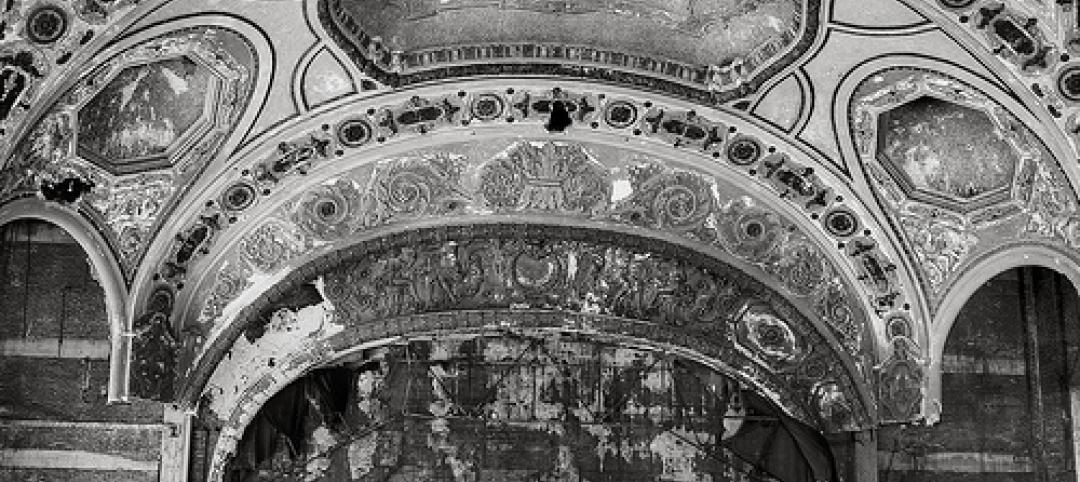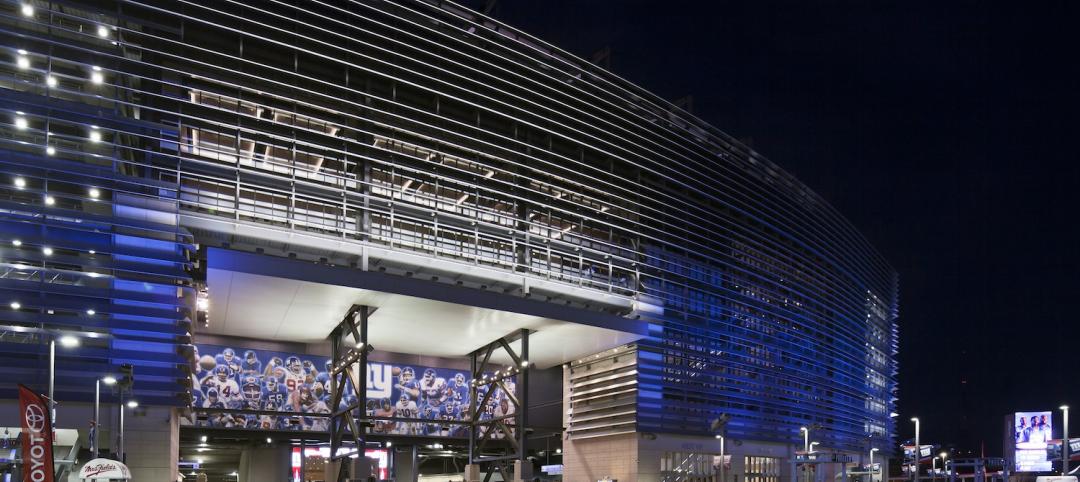Laurence Geller, the blunt-talking British chief executive of Strategic Hotels & Resorts, plans to literally spruce up the facade of the InterContinental Chicago hotel on North Michigan Avenue with a 9,800-sf living green wall.
The wall, which requires City Council approval, would be covered in thousands of plants growing year-round in concealed trays hung perpendicular to the wall. It would be the largest wall of its kind in North America and one of a handful in Chicago, according to Geller and Anne Roberts, the local landscape designer he has hired to build it.
"Unless you start glamoring this thing up, it will never look iconic," Geller said of the two-tower hotel, which Chicago-based Strategic owns. The green wall "will make this North Tower disappear."
Why, I asked, was that tower built with so few windows?
"Because it was built stupidly — cheaply and stupidly some 30-odd-years ago," Geller said. "I don't know what was in anyone's head."
Ald. Brendan Reilly, whose ward includes North Michigan Avenue, said he would introduce an ordinance authorizing the wall and other improvements to the hotel's exterior — awnings, a larger patio to the north, additional lighting — as early as July. The wall will wrap around about 10 of the North Tower's 26 stories and will be lit at night.
"I can't image this will be considered controversial," Reilly said. "Otherwise, it is a pretty unattractive blank wall."
If the council approves the project, Geller expects the frame will be finished this winter and the plants hung by spring. He estimates all of the improvements will cost $2 million to $3 million and hopes the wall will draw more customers.
"We're going to do it because it's right, and we may make a lot of money," he said. "All I need is a quarter-point (more) of market share to get a 20 percent return. And if I don't get it, I don't get it, but at least I'll have made the building better."
Chicago is known for its green roofs but has few green walls, a trend that began in the late 1980s in France. Like green roofs, living walls scrub the air and provide insulation, thereby lowering electricity costs.
But Geller said his water bill likely will increase. Roberts is going to try to water the wall with rain collected on the InterContinental's roof, but she admitted it would not meet all of the garden's needs.
The scarcity of green walls here, experts say, is due to cost and climate. The new Rivers Casino in Des Plaines has a small indoor one, and the Chicago Botanic Garden's new children's garden has four outdoor walls that cover about 670 square feet total.
The far larger project Geller envisions was once thought impossible in Chicago.
"At one time, way back at the beginning of Millennium Park, we considered a Jeff Koons-style puppy made of plants," said Donna La Pietra, the head of Millennium Park Inc., the park's fundraising arm. "The first question we had was, 'Are you sure?' The next was, 'What's going to happen in the winter?' That has always been the thorny question. What kinds of materials can one use? But for almost every challenge that gets raised in the Midwest about plant materials, someone finds a solution. Now we have much more tolerant plants."
Roberts, who has never constructed a green wall, has yet to finalize the hybrids she will use but said evergreens and native plants will be part of the mix. She is working with Rochester, N.Y.-based Green Living Technologies International, which has experience and built the walls at the botanic garden.
Before hanging the plants, Roberts will grow them indoors and slowly rotate them over several months to a 90-degree angle.
"They have to be oriented to that condition before they're put on the wall," she said.
Roberts and her team will control the wall's plastic irrigation system from an off-site computer. When the temperature dips below freezing, the system will be drained. Maintenance will be necessary two to three times per year and done in a similar manner to window-washing. Workers will dangle from the roof to trim and replace plants.
"This is horticulture to the 100th degree," Roberts said. "It's infinitely much harder to figure out what's going to grow on a wall. And this wall will face west, meaning very, very hot in the summer, and is near the lake, meaning high winds."
Geller said the first year will be "trial and error and effort" — "we'll over-irrigate and kill some (plants)," he warned. But if it succeeds, he believes tourists will flock to photograph it and that will propel more business.
"I think Michigan Avenue is old-fashioned in the way its retailing is," said Geller, who praised only the Crate & Barrel store and a Burberry store that is under construction. "Unless architecture meets retailing, retailing will never be successful."
A bolder Michigan Avenue would attract more tourists, and, he added, "I'd make more money." +
Related Stories
| Aug 21, 2014
Must See: Detroit's Beaux-Arts parking garage
An opulent Renaissance Revival building in downtown Detroit is being used as a parking garage.
| Aug 20, 2014
WELL Building: The next step in green sports construction
The WELL Building Standard, a new protocol that focuses on human wellness within the built environment, is a particularly good fit for sports facilities, write Skanska's Tom Tingle and Beth Heider.
| Aug 20, 2014
Seattle's King Street Station thoughtfully restored [2014 Reconstruction Awards]
After years of neglect and botched renovations, King Street Station sparkles once again.
| Aug 20, 2014
Tour an office with no assigned workstations [slideshow]
The New York office of the Gerson Lehrman Group recently redesigned its office without personal desks or cubicles. The company gave each of its 250 employees a locker, a laptop, and told to work anywhere they wanted, according to Business Insider.
| Aug 20, 2014
Architecture Billings Index reaches highest mark since 2007
The American Institute of Architects reported the July ABI score was 55.8, up noticeably from a mark of 53.5 in June.
| Aug 19, 2014
Goettsch Partners unveils design for mega mixed-use development in Shenzhen [slideshow]
The overall design concept is of a complex of textured buildings that would differentiate from the surrounding blue-glass buildings of Shenzhen.
| Aug 19, 2014
HOK to acquire 360 Architecture
Expected to be finalized by the end of October, the acquisition of 360 Architecture will provide immediate benefits to both firms’ clients worldwide as HOK re-enters the sports and entertainment market.
| Aug 19, 2014
A designer's epiphany: 'Let's stop talking and make something'
Making things is important because it reveals gaps in thought, sheds light on the fundamental assumptions that can kill ideas, and forces us to push toward solutions that actually work, writes HDR's David Grandy.
| Aug 19, 2014
Construction boom lures new class of lenders in Nashville, says JLL
In the coming months, a gleaming S-shaped tower will join Nashville's burgeoning skyline. The new tower is just one example of a project financed not with conventional construction loans but with a unique blend of equity and debt.
| Aug 18, 2014
Perkins+Will expands planning practice with strategic focus on underserved U.S. communities
The broadened focus is resulting in comprehensive, long-term plans that will guide new growth in places like Buffalo, N.Y., Kingston, R.I., and Brooklyn, N.Y.

















